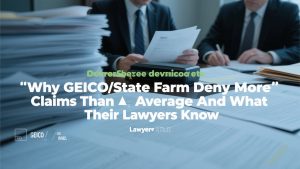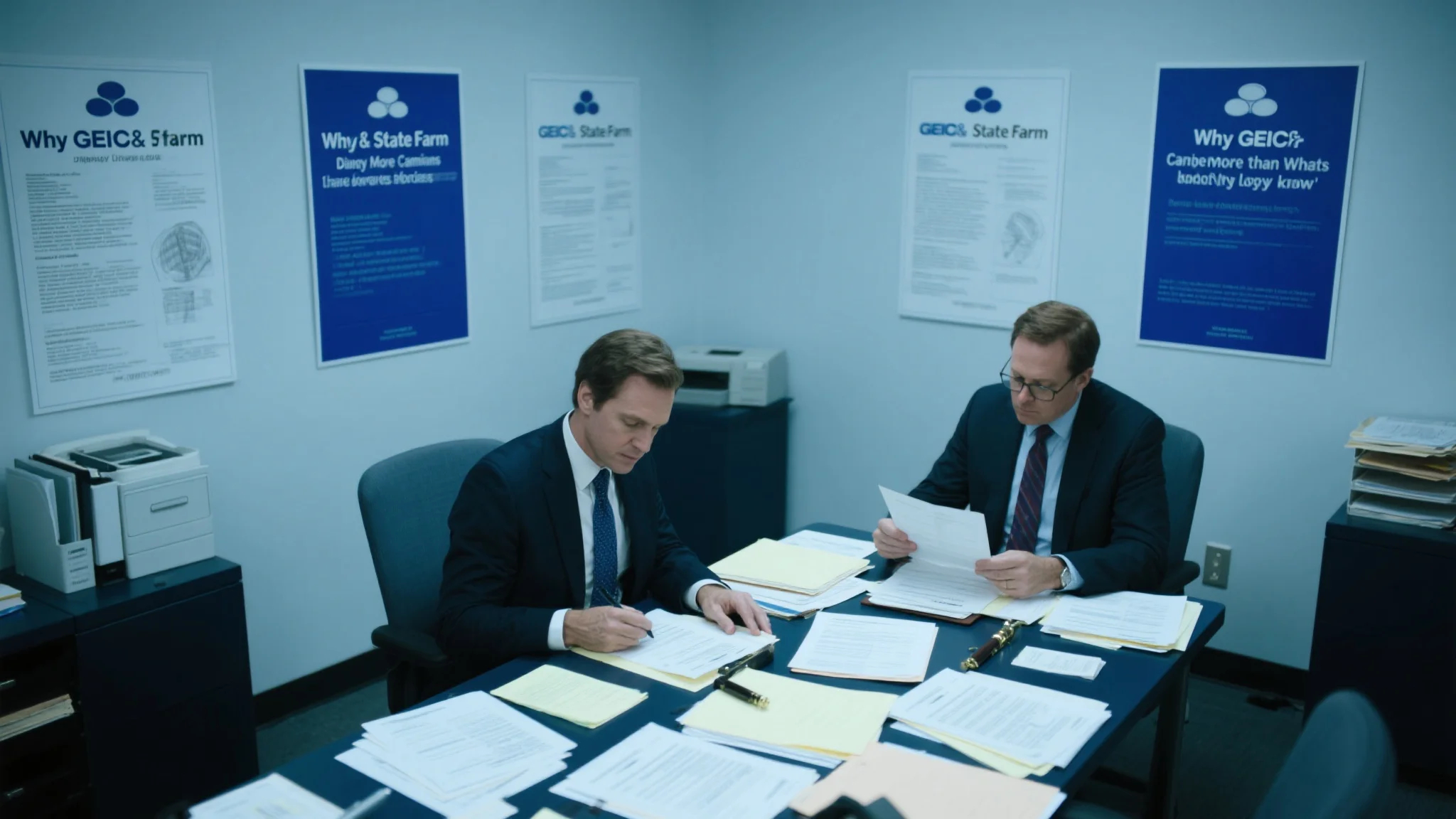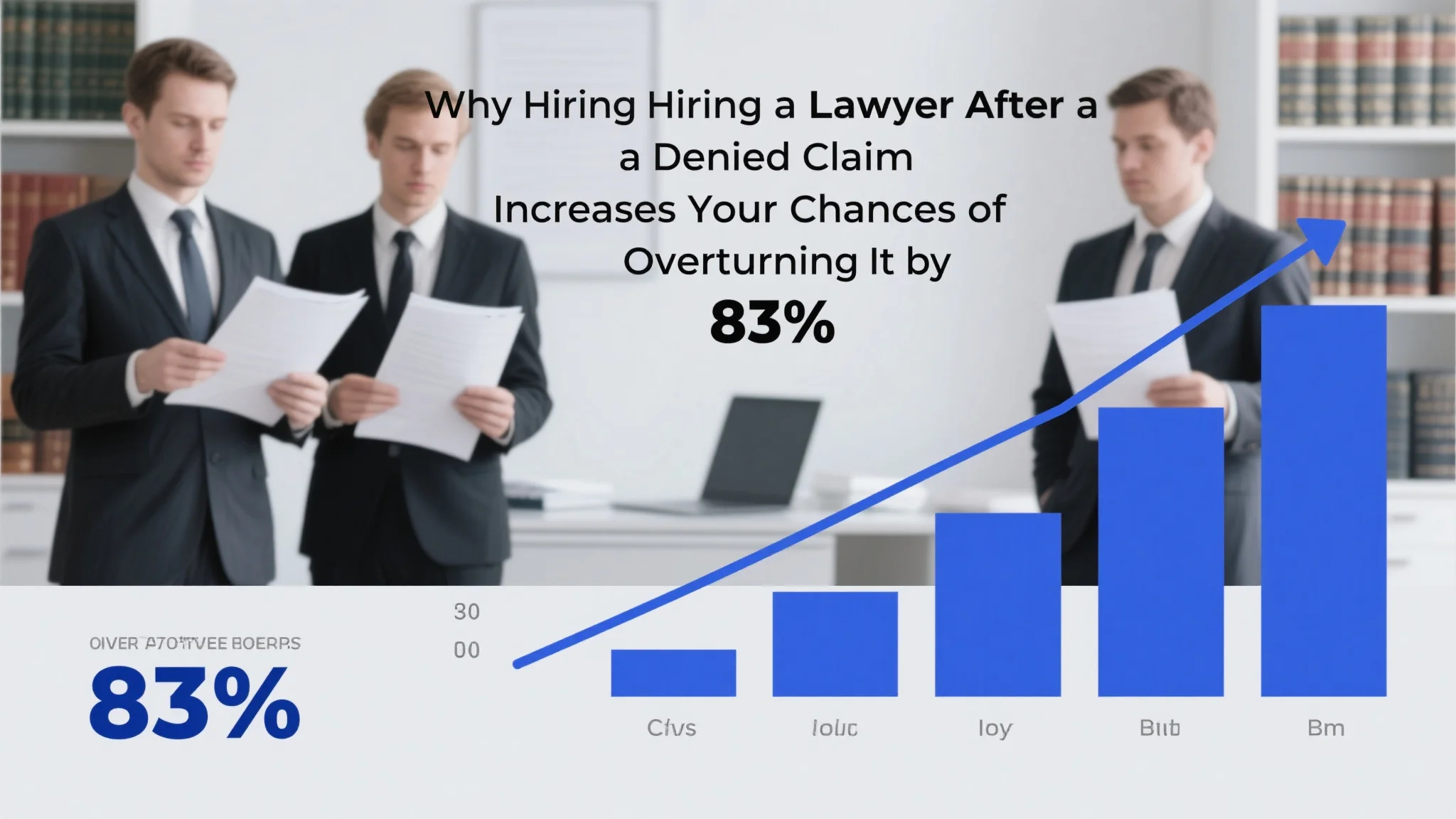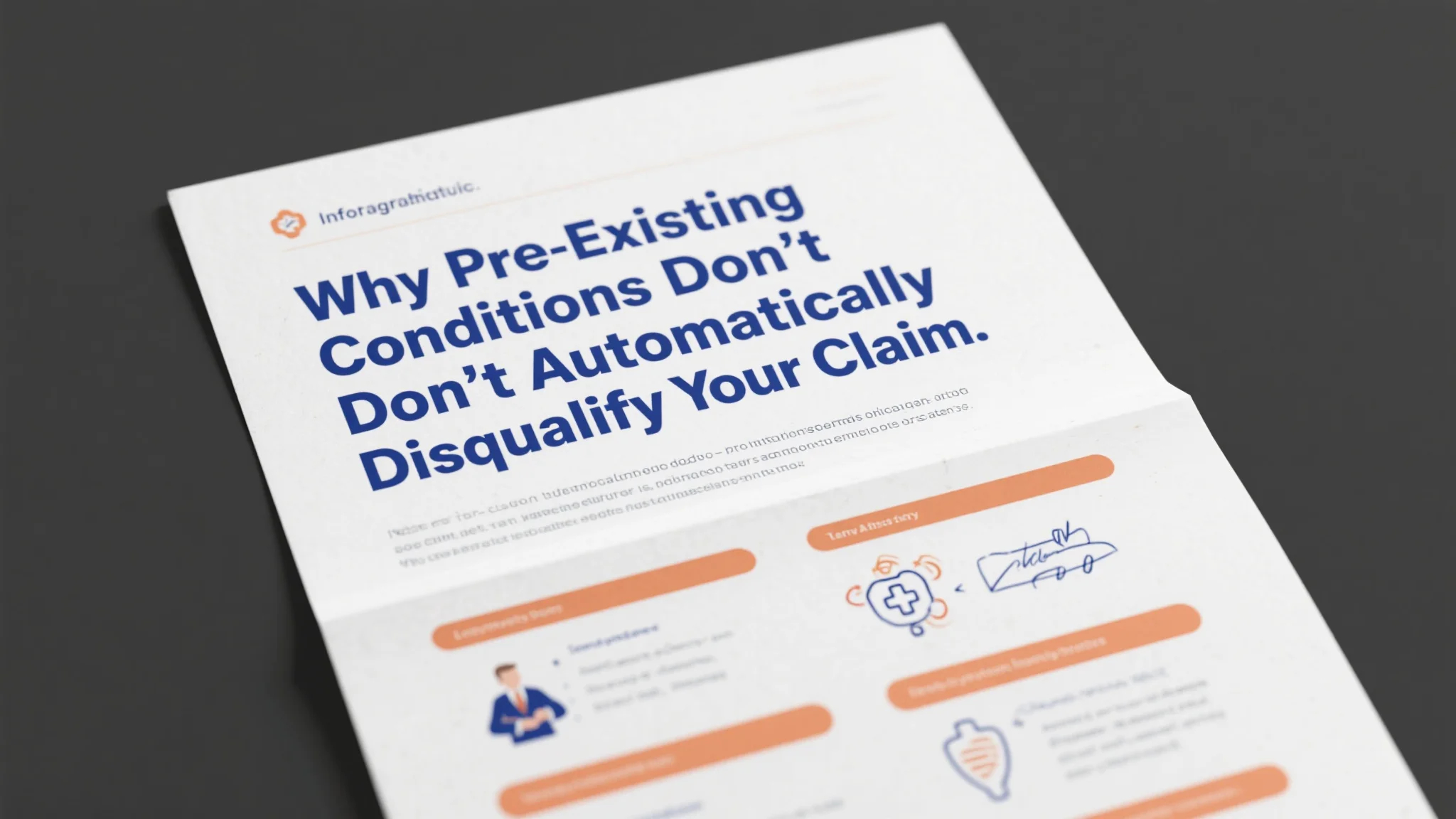The insurance industry operates on a fundamental principle that many consumers don’t fully understand: maximizing profits by minimizing claim payouts. While all insurance companies employ various strategies to reduce their financial exposure, certain major insurers have developed particularly sophisticated systems for denying legitimate claims. Among these industry giants, GEICO and State Farm have earned reputations for denial rates that consistently exceed industry averages, employing tactics that their legal teams have refined over decades of litigation experience. Understanding why GEICO claim denial rates remain so high requires examining the corporate culture, training protocols, and legal strategies that prioritize profit margins over policyholder protection.
The Corporate Architecture of Claim Denial: How Major Insurers Structure Rejection Systems
GEICO and State Farm have perfected organizational structures that systematically encourage claim denials through carefully designed incentive systems, performance metrics, and corporate policies that reward adjusters for minimizing payouts rather than fairly evaluating claims. These companies employ sophisticated data analytics to identify claims that can be denied or significantly reduced, using algorithms that flag certain types of accidents, injury patterns, or claimant demographics as higher risks for fraudulent or exaggerated claims. The corporate training programs at these companies emphasize cost containment strategies, teaching adjusters to look for reasons to deny claims rather than reasons to approve them, creating an institutional bias against policyholders that permeates every level of the claims process.
The performance evaluation systems at major insurance companies like GEICO and State Farm typically include metrics that directly or indirectly reward adjusters for maintaining low payout ratios, creating financial incentives for employees to deny legitimate claims. Adjusters who consistently approve claims at rates above company targets may face negative performance reviews, reduced bonuses, or even termination, while those who maintain high denial rates often receive promotions and financial rewards. This system creates a corporate culture where denying claims becomes a pathway to career advancement, regardless of the legitimacy of the claims being denied. The companies justify these practices by claiming they’re protecting against fraud, but internal documents from various lawsuits have revealed that these systems often target legitimate claims simply because they exceed certain dollar thresholds or involve specific types of injuries.
The legal departments at GEICO and State Farm play crucial roles in developing and implementing denial strategies, working closely with claims departments to identify legal justifications for denying claims that might otherwise be approved. These legal teams maintain extensive databases of successful denial arguments, court precedents that favor insurance companies, and procedural technicalities that can be used to avoid paying legitimate claims. They also develop standardized denial letters and procedures that are designed to discourage policyholders from appealing decisions or seeking legal representation. The sophistication of these legal strategies reflects decades of experience in defending against lawsuits and finding ways to minimize financial exposure while staying within the bounds of legal requirements.
The use of independent medical examinations (IMEs) and surveillance represents another systematic approach that GEICO and State Farm use to deny claims, particularly those involving soft tissue injuries or other conditions that are difficult to objectively verify. These companies maintain networks of doctors and investigators who are known for providing opinions that favor the insurance company’s position, regardless of the actual medical evidence. The IME process is often used to contradict treating physicians’ opinions, with insurance companies arguing that their “independent” experts are more objective than doctors who have ongoing relationships with claimants. Similarly, surveillance operations are designed to capture footage that can be taken out of context to suggest that claimants are not as injured as they claim, even when such activities represent normal variations in pain levels or temporary improvements in condition.
The claims investigation procedures at these major insurers are often designed to create delays and complications that discourage claimants from pursuing their claims to completion. Adjusters may request excessive documentation, require multiple medical examinations, or demand information that is difficult or impossible to obtain, knowing that many claimants will eventually give up rather than continue fighting for their benefits. These delay tactics serve multiple purposes: they reduce the present value of eventual payouts through the time value of money, they increase the likelihood that claimants will accept lowball settlement offers out of financial desperation, and they create administrative costs for claimants that may exceed the value of smaller claims.
The training materials and internal communications at GEICO and State Farm reveal sophisticated understanding of psychological tactics that can be used to manipulate claimants into accepting unfavorable outcomes. Adjusters are taught to use language that implies finality in denial decisions, to emphasize the costs and uncertainties of litigation, and to present lowball settlement offers in ways that make them seem reasonable or generous. These companies also train their representatives to identify claimants who may be particularly vulnerable to pressure tactics, such as those facing financial hardship, those with limited education or language barriers, or those who lack access to legal representation.
The coordination between different departments within these insurance companies creates seamless systems for implementing denial strategies across all aspects of the claims process. Legal departments provide guidance on defensible denial rationales, medical departments identify expert witnesses who will support company positions, and claims departments implement standardized procedures that maximize the chances of successful denials. This coordinated approach ensures that denial decisions are supported by documentation and expert opinions that will withstand initial scrutiny, even when the underlying basis for denial is questionable. The companies invest heavily in creating paper trails that support their denial decisions, knowing that most claimants will not have the resources or expertise to challenge these carefully constructed justifications.

Legal Strategies and Precedent Manipulation: How Insurance Giants Shape the Litigation Landscape
The legal teams at GEICO and State Farm have developed sophisticated strategies for influencing court decisions and creating legal precedents that favor insurance company positions in future cases. These companies invest millions of dollars annually in litigation, not just to defend individual claims, but to establish legal precedents that will make it more difficult for future claimants to succeed in court. They carefully select which cases to fight aggressively and which to settle quietly, often choosing to litigate cases where they believe they can establish favorable precedents even if the immediate financial stakes are relatively small. This long-term strategic approach to litigation allows these companies to shape the legal landscape in ways that benefit their denial practices for years to come.
The use of expert witnesses represents a particularly sophisticated aspect of how major insurers like GEICO and State Farm manipulate the legal system to support their denial practices. These companies maintain extensive networks of medical experts, accident reconstruction specialists, economists, and other professionals who are known for providing opinions that favor insurance company positions. Many of these experts derive significant portions of their income from insurance company work, creating financial incentives to provide favorable opinions regardless of the actual evidence. The companies carefully track the success rates of different experts in various types of cases, allowing them to select witnesses who are most likely to provide convincing testimony that supports denial decisions.
The discovery process in insurance litigation provides these companies with opportunities to gather intelligence about plaintiff attorneys, medical providers, and litigation strategies that can be used to improve their denial practices in future cases. GEICO and State Farm maintain sophisticated databases of information gathered through discovery, including details about attorney tactics, medical provider billing practices, and claimant behavior patterns that can be used to identify weaknesses in future claims. This intelligence gathering allows these companies to stay ahead of evolving litigation strategies and to develop countermeasures that make it more difficult for claimants to succeed in court.
The settlement negotiation strategies employed by these major insurers reflect deep understanding of the economic pressures facing claimants and their attorneys. State Farm claim denial tactics often include making lowball settlement offers at strategic times when claimants are most likely to be facing financial pressure, such as shortly before medical bills are due or when claimants are unable to work due to their injuries. These companies also use information gathered during the claims process to identify claimants who may be particularly vulnerable to economic pressure, allowing them to time settlement offers for maximum effectiveness. The goal is to resolve claims for amounts significantly below their actual value, taking advantage of claimants’ immediate financial needs and limited understanding of their legal rights.
The appellate litigation strategies of GEICO and State Farm demonstrate their commitment to shaping legal precedents at the highest levels of the court system. These companies are willing to spend substantial amounts on appeals, even in cases where the immediate financial stakes are relatively modest, if they believe they can establish precedents that will benefit them in future cases. They maintain specialized appellate legal teams that focus exclusively on developing arguments and strategies for higher court proceedings, understanding that favorable appellate decisions can impact thousands of future claims. This investment in appellate litigation reflects a sophisticated understanding of how legal precedents influence the entire claims landscape.
The coordination with defense bar organizations and industry groups allows these major insurers to influence legal education, judicial selection, and legislative processes in ways that favor their denial practices. GEICO and State Farm are active participants in insurance industry organizations that lobby for legal reforms, sponsor continuing education programs for judges and attorneys, and fund research that supports insurance company positions on various legal issues. This broader influence on the legal system creates an environment that is increasingly favorable to insurance company denial practices, making it more difficult for individual claimants to challenge wrongful denials successfully.
The use of procedural technicalities and statute of limitations defenses represents another area where these companies’ legal expertise provides significant advantages in avoiding legitimate claim payments. Their legal teams are expert at identifying procedural defects in claims submissions, missed deadlines, and other technical violations that can be used to deny claims regardless of their underlying merit. These companies often deliberately create complex procedural requirements and tight deadlines, knowing that many claimants will fail to comply with all requirements, providing legal justification for denial. The sophistication of these procedural defenses reflects years of experience in finding ways to avoid paying legitimate claims while maintaining legal defensibility.
The bad faith litigation defense strategies employed by GEICO and State Farm demonstrate their understanding of how to minimize exposure to punitive damages and attorney fee awards even when their denial practices are questionable. These companies have developed sophisticated approaches to documenting their decision-making processes in ways that provide legal cover for denial decisions, even when the underlying rationale is primarily financial rather than based on legitimate coverage or liability concerns. They train their adjusters to create paper trails that support denial decisions and to avoid creating documentation that could be used to prove bad faith in subsequent litigation.
Insider Knowledge and Systematic Exploitation: What Insurance Company Lawyers Don’t Want You to Know
The most damaging revelations about GEICO and State Farm’s denial practices come from internal documents, whistleblower testimony, and depositions that have emerged through litigation, revealing systematic approaches to denying legitimate claims that go far beyond what these companies publicly acknowledge. These insider accounts demonstrate that insurance company denial tactics are often based on financial considerations rather than legitimate coverage or liability concerns, with company policies that explicitly encourage adjusters to find reasons to deny claims rather than reasons to approve them. The sophistication of these internal systems reflects decades of refinement and optimization, creating denial processes that are designed to maximize profits while maintaining legal defensibility.
Former employees and industry insiders have revealed that GEICO and State Farm maintain internal quotas and targets for claim denials, despite public denials of such practices. These quotas may not be explicitly stated as denial requirements, but they are embedded in performance metrics that make it virtually impossible for adjusters to meet their targets without maintaining high denial rates. Adjusters who consistently approve claims at rates above these implicit targets face negative performance reviews, reduced advancement opportunities, and increased scrutiny of their decisions. The companies use sophisticated statistical analysis to identify adjusters whose approval rates exceed company norms, subjecting these employees to additional training, supervision, or disciplinary action that effectively pressures them to deny more claims.
The medical review processes at these major insurers often involve predetermined outcomes, with company doctors and nurses instructed to find medical justifications for denying claims regardless of the actual medical evidence. Internal communications have revealed instances where medical reviewers were pressured to change their initial assessments when those assessments supported claimant positions, with supervisors providing “guidance” on how to interpret medical evidence in ways that favor denial. These companies maintain databases of medical conditions and treatments that are considered “red flags” for potential denial, with reviewers trained to focus on these factors rather than conducting comprehensive evaluations of claimants’ medical conditions.
The surveillance and investigation practices employed by GEICO and State Farm often cross ethical and legal boundaries, with private investigators instructed to gather information that can be used to deny claims regardless of its relevance to the actual claim circumstances. These investigations may include social media monitoring, background checks that go far beyond what is necessary for claim evaluation, and surveillance activities that are designed to capture footage that can be taken out of context to suggest fraud or exaggeration. The companies maintain detailed profiles of claimants that include personal information, financial circumstances, and other factors that are used to develop denial strategies tailored to individual vulnerabilities.
The coordination between GEICO, State Farm, and other major insurers through industry databases and information sharing agreements creates a system where claimants who challenge denials or hire attorneys are flagged across the industry as potential problems. These shared databases include information about claimants’ litigation history, attorney relationships, and previous claim outcomes that can be used to develop denial strategies for future claims. Claimants who have successfully challenged previous denials may find themselves facing increased scrutiny and more aggressive denial tactics in subsequent claims, regardless of the legitimacy of their new claims.
The training materials used by these companies reveal sophisticated psychological manipulation techniques that are designed to discourage claimants from pursuing their rights. Adjusters are taught to use language that implies finality in denial decisions, to emphasize the costs and uncertainties of litigation, and to present company positions as being based on objective analysis rather than financial considerations. These training programs include role-playing exercises where adjusters practice delivering denial decisions in ways that minimize the likelihood of appeals or legal challenges, with specific scripts and talking points designed to discourage claimants from seeking legal representation.
The claims handling software and technology systems used by GEICO and State Farm include features that automatically flag certain types of claims for denial or increased scrutiny based on algorithms that prioritize cost containment over fair evaluation. These systems may automatically generate denial letters for certain types of claims, with adjusters required to find specific justifications for approval rather than conducting independent evaluations. The sophistication of these technological systems reflects significant investment in automating denial processes, with artificial intelligence and machine learning algorithms trained on historical data that may perpetuate biased decision-making patterns.
The financial incentive structures within these companies extend beyond individual adjuster performance to include department-wide and company-wide bonuses that are tied to maintaining low loss ratios and high profit margins. These incentives create institutional pressure to deny claims at every level of the organization, from front-line adjusters to senior management. The companies use sophisticated financial modeling to project the impact of different denial rates on their profitability, with specific targets for claim denial percentages that are communicated throughout the organization as business objectives rather than quality metrics.
The legal strategies employed by these companies include deliberate attempts to exhaust claimants’ financial resources through prolonged litigation, excessive discovery requests, and other tactics designed to make it economically unfeasible for claimants to pursue their claims to completion. These companies understand that most claimants have limited resources for litigation and will eventually be forced to accept unfavorable settlements rather than continue fighting. The legal teams at GEICO and State Farm are expert at calculating the economic breaking points for different types of claimants, allowing them to calibrate their litigation strategies to maximize the likelihood of favorable outcomes regardless of the underlying merit of the claims.
The regulatory compliance strategies of these major insurers involve sophisticated approaches to managing relationships with state insurance departments and other regulatory bodies, often using their political influence and industry connections to minimize regulatory oversight of their denial practices. These companies maintain extensive lobbying operations and contribute to political campaigns and industry organizations that influence insurance regulation, creating an environment where regulatory enforcement of fair claims practices is often inadequate. They also employ former regulators and government officials who understand how to navigate regulatory processes and minimize the impact of regulatory investigations or enforcement actions.



